Canon RF 24-105mm f/2.8 L Z Review: The Best Do-It-All Lens
We’ve seen 24-105mm lens formulas before and we have seen f/2.8 zooms, too. However, we have never seen the two combined, and it’s about time.
I love the 24-105mm focal range for its versatility, especially when I want to stick to only one lens. I feel that the ability to push that extra telephoto range makes a big difference when shooting people and to have the shallow depth of field of an f/2.8 aperture makes it all the more usable. But, in the world of photography, you can’t have your cake and eat it too. Not without paying for it somewhere else.
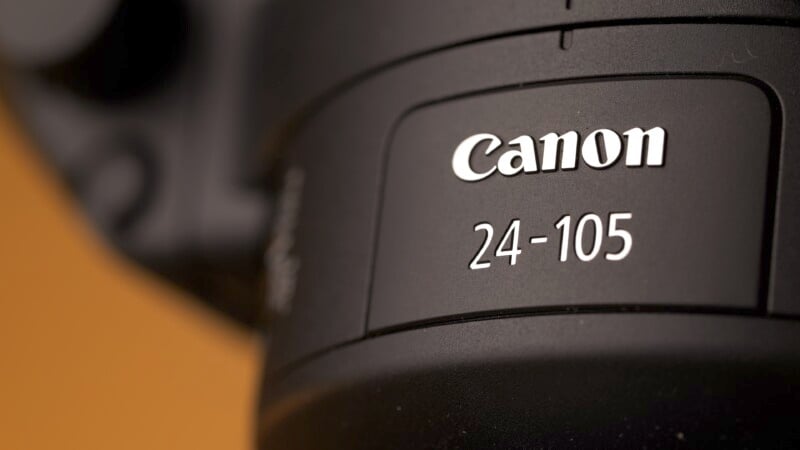
Canon RF 24-105mm f/2.8 L Z: How It Handles
Where you pay for the convenience of having a bright and fast 24-105mm lens is in its not-so-convenient weight and size. At just under three pounds (1,330 grams), the 24-105mm is a hefty lens and handles almost exactly like a 70-200 f/2.8 would.
The size and weight are not too bad if you are out for the day with only one lens but it becomes an issue if you have to carry a few lenses in your camera bag with it. Further, any inconvenience I suffered was more so related to the size rather than the weight. The 24-105mm has an 82mm filter thread at the front and comes with a rather diminutive-looking lens hood.
All this extra real estate does allow for plenty of controls, starting with a customizable control ring at the front of the lens, and one of the nicest manual focus rings I’ve ever used. There are also the usual custom function buttons around the barrel and another ring which we seldom see outside of Canon cinema lenses.
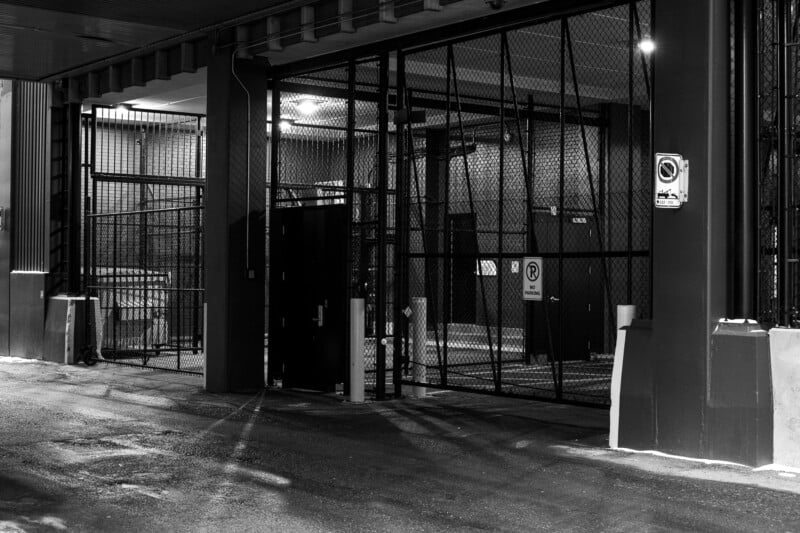

The 24-105mm has a dedicated aperture ring which can be locked into auto mode and it is declicked. The ring is intended for smooth aperture control in video applications and Canon intends for the ring to be used only in video, going so far as to disable it in photo modes. I found this very confusing, not only because I wanted to adjust my aperture in photo mode, but also because whatever the aperture ring was set to did not correlate with the photo setting.
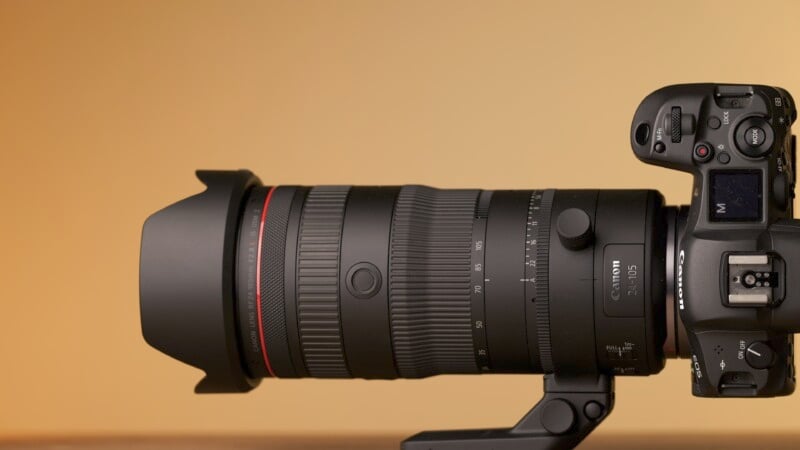
The lens collar is solid and the foot can be removed if desired. There are no 90-degree click stops, however, and no dovetail cuts for tripod use. I’d like to have seen both.
Being an “L” series lens, the build quality is excellent and the lens is fully sealed against weather and dust. There are the standard switches for focus control and limitations as well as for the new lens-based image stabilizer.
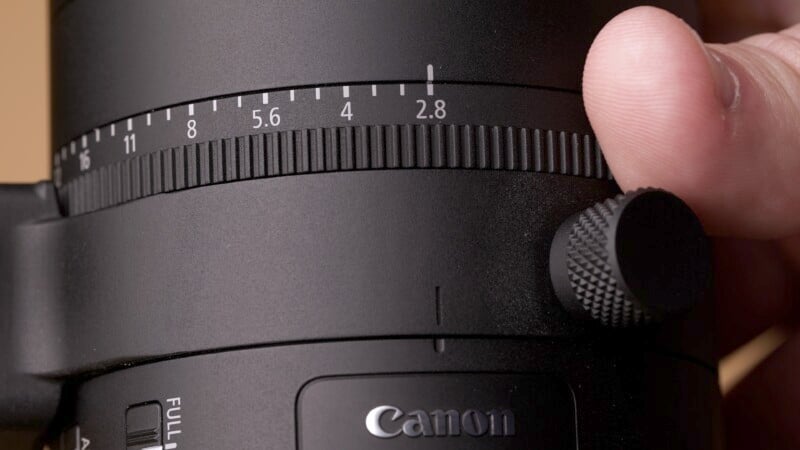

Canon RF 24-105mm f/2.8 L Z: How It Shoots
Let’s start with the sharpness of the new 24-105mm lens. Like all “L” series lenses, resolving power is a general hallmark, and the new 24-105mm continues that tradition. I was very pleased with the center sharpness regardless of what focal length I was using.
Even at f/2.8, the images are crisp and clear in the center, with almost no change as you step down the aperture. However, corners are a different story, and I suspect it is due to the heavy distortion being corrected in this lens. This is very typical of modern lenses where the distortion can be corrected for in the camera without the user worrying about it, but it can leave the sharpness of the corners somewhat lacking.
At f/2.8 the corners show a smeared appearance falling towards the edges of the frame. Stopping down to f/5.6 improves things quite a bit, but the smearing is still there if you look for it. This happens at either end of the lens range and in most photos will honestly be a non-issue. The lens is also very flat shooting with minimal field curvature, so if I needed precise sharpness across the frame I’d keep the lens around 60mm and quite happily live my life.
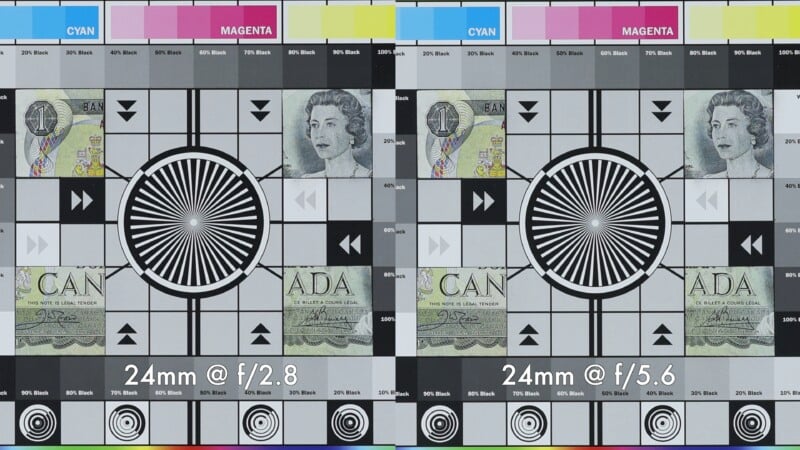

There is unfortunately some minor loca, or longitudinal chromatic aberration, present. This is a tricky thing to remove in post and makes itself known as distinct casts of color in the out-of-focus areas of the image. In the 24-105mm lens case, you get a visible yellow-blue split which will only show up in fairly contrasty situations. Still, it’s not ideal.
Flare was also present with very good control of any washed-out appearance from bright light sources, but a fair amount of ghosting opposite the light source. The early models had issues with light rays streaking across the image but this has been corrected now, however, the ghosting is still a present issue when stopping the lens down.
Lastly, the autofocus motor performed exactly as expected. It was fast and silent and would be ideal for any journalistic task. I also appreciated the close focusing capabilities of this lens at 105mm. 1:3 life-size reproduction can be achieved which allows for very tight facial feature portraits and the occasional flower or detail shot. I could see this being excellent for capturing table settings at a wedding for example, or the happy couple’s hands clasped together, but a tight shot of the wedding rings will require a bit of cropping.
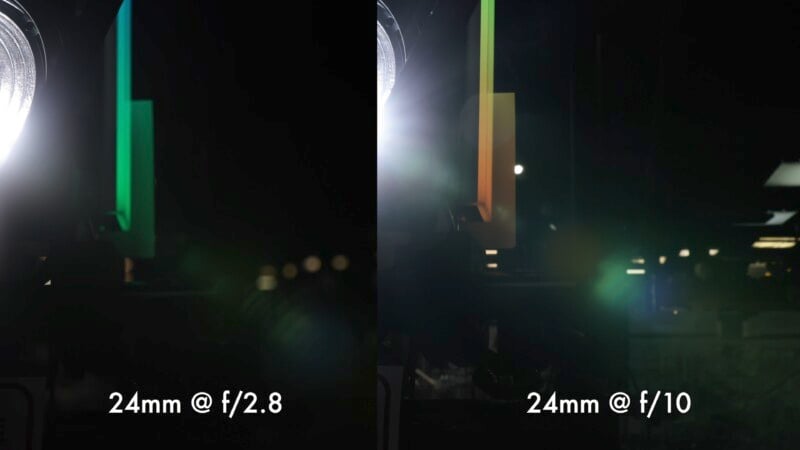
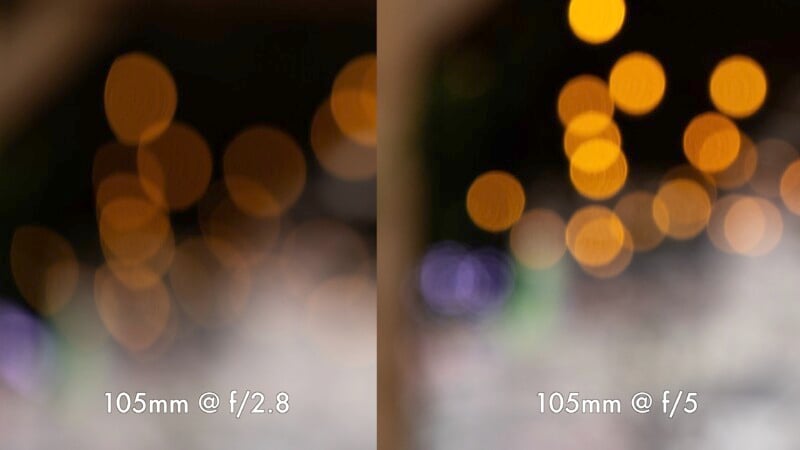
Canon RF 24-105mm f/2.8 L Z: The Best Do-It-All Lens
Canon has certainly made a lens that is versatile and professional. Most of the optical issues can be worked around easily, and the extra light gathering is handy. This is also a lens made for video work, with a dedicated aperture ring and smooth manual focusing. There is some lens breathing present, surprisingly worse at the 24mm range rather than the 105mm range. There is also an optional power zoom motor attachment which would provide an almost TV broadcast kind of functionality for sporting events or weddings.
I could see this lens being extremely popular for journalists, wedding shooters, and event videographers. As a general purpose walk around lens, I feel it’s okay, if not a little too big and bulky. I’d prefer the more affordable and much more compact f/4 version for travel and casual shooting myself. Regardless, we have a lens that hasn’t been made before and Canon did a great job. So much so, that we might have some imitators coming out of the woodwork sooner than later.

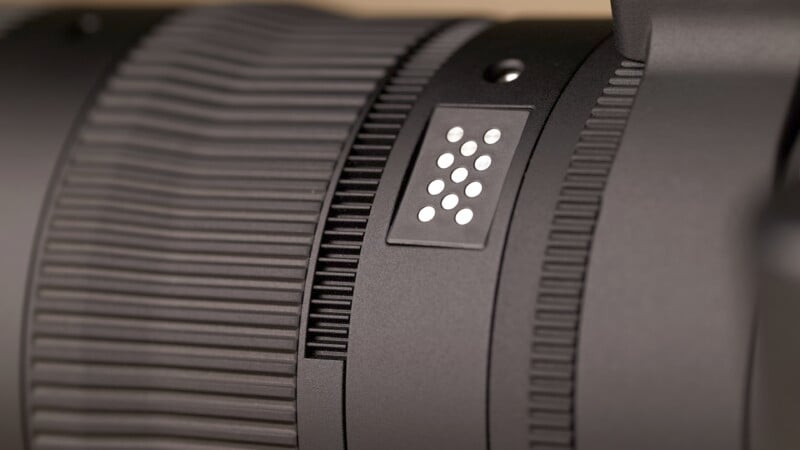
Are There Alternatives?
There isn’t anything exactly like it, so the only other options are the 24-70mm f/2.8 if you want a slightly smaller but still bright option, or the 24-105mm f/4 if you want the range without the cost and bulk.
Should You Buy It?
Yes. If you are a working professional or hybrid photo and video shooter who needs speed and versatility, you have an expensive but functional answer to your problems.